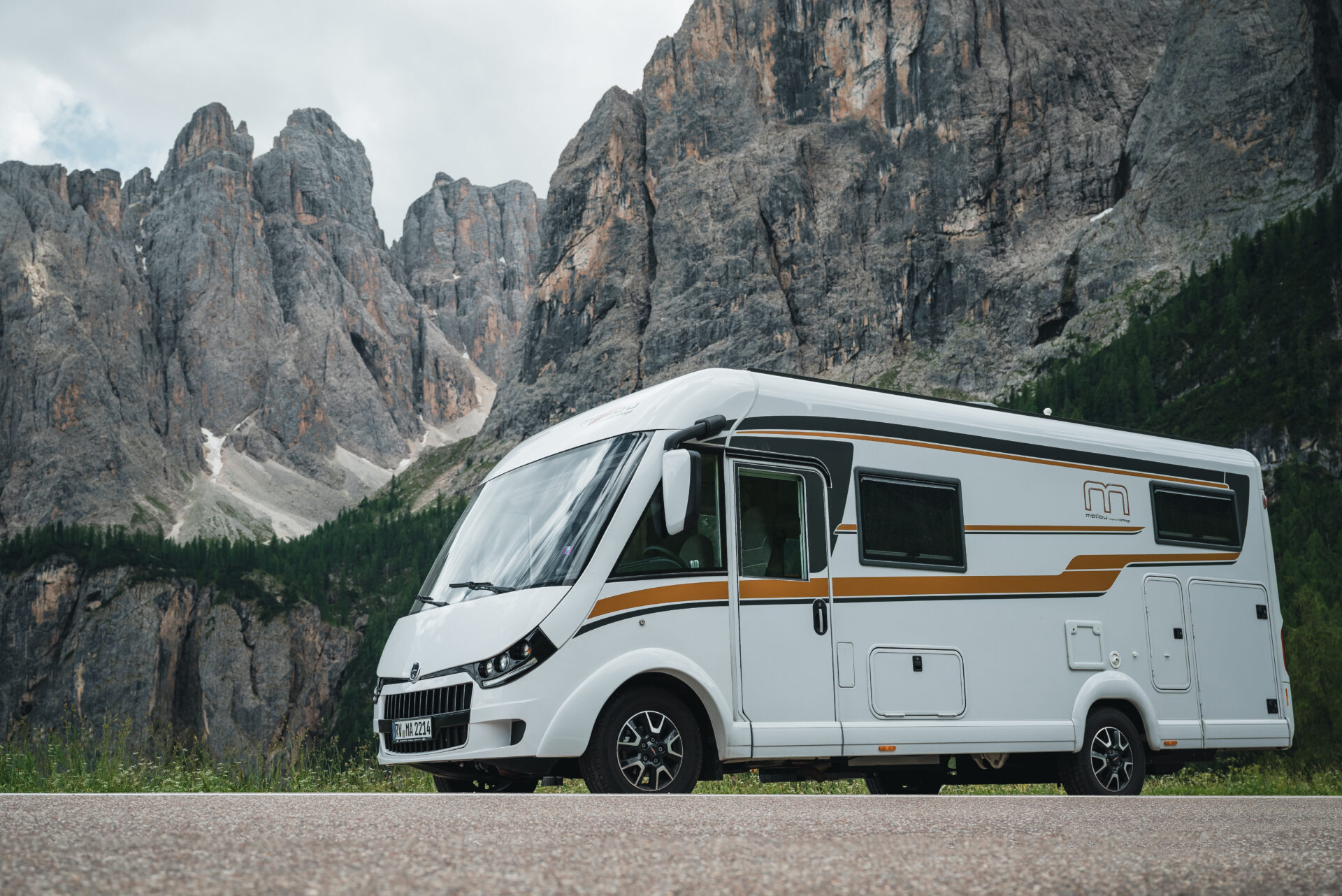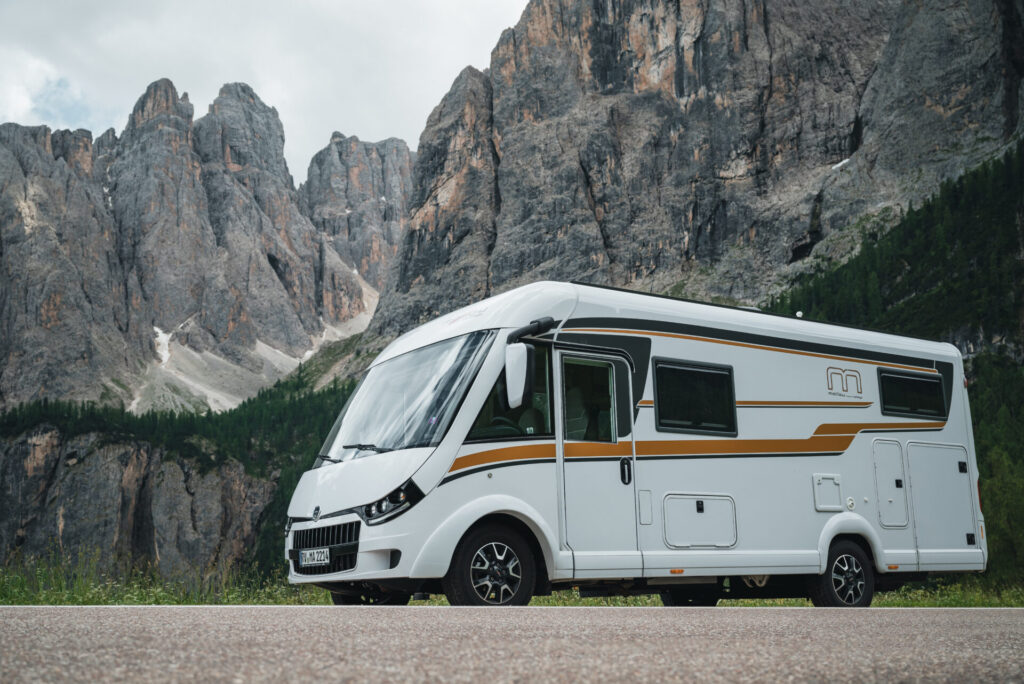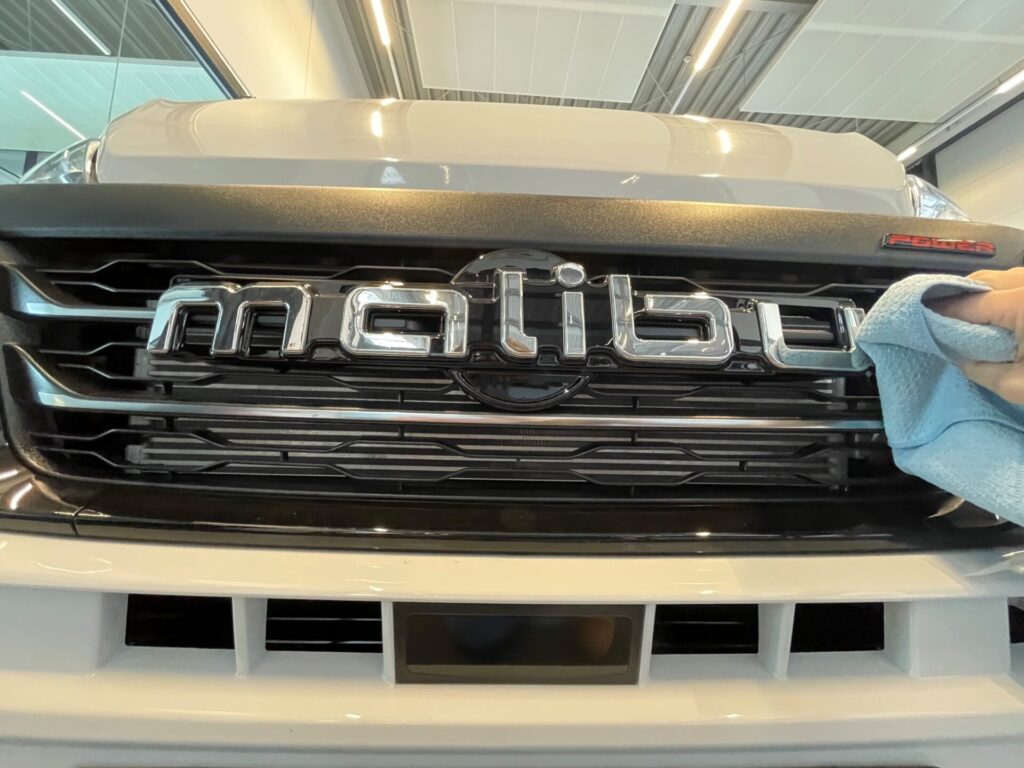Vignettes and badgets
How to keep an overview
Each holiday destination regulates its own charges for the use of motorways or roads in its own country. If you are travelling through several countries, it is easy to lose track of which vignettes or stickers are required in which country.
To give you an overview, we have summarised the regulations for the individual countries for you here.

Germany
In several German cities, so-called environmental zones have been set up to reduce air pollution with particulate matter and nitrogen dioxide. Environmental zones are marked with traffic signs, from which the additional sign indicates which sticker is authorised to drive in the environmental zone. A distinction is made between
- Green environmental badge
- Yellow environmental badge
- Red environmental badge
The colour of the sticker indicates how high the vehicle’s particle emissions are. Only vehicles with the correspondingly labelled sticker are allowed to enter the environmental zone. A sticker is not required when entering German territory alone, only if the vehicle is to enter an environmental zone.
Environmental stickers are issued by the registration authorities or the competent authorities for carrying out exhaust emission tests (vehicle workshops, petrol stations with workshops, Dekra, TÜV). A sticker can also be ordered here in advance. The vehicle documents are important for this.
You can find the low emission zones in Germany here:
France
France also has an environmental zone in many cities. Here, too, you may only drive with an environmental sticker (Crit’Air vignette). The sticker is valid throughout France. A German environmental badge is not sufficient in France – and vice versa.
The Crit’Air vignette is issued to the following vehicles on application:
- Cars (first registered for road traffic after 31 December 1996)
- Motorbikes, trikes and light quads (first registered after 1 June 2000)
- light commercial vehicles up to 3.5 tonnes maximum permissible mass (first registered after 30.9.1997)
- Trucks and buses (first registration from 1 October 2001)
Older vehicles are not issued an environmental badge. They are not allowed to drive in French low emission zones unless a locally applicable exemption applies.
But what about motorhomes?
With a permissible total mass of up to 3.5 tonnes, they are classed as passenger cars; above this, the same rules apply as for HGVs.
The sticker can be purchased online via the French Ministry of the Environment (https://www.certificat-air.gouv.fr/).
The cost is between €3.77 and €4.67 – depending on whether the vehicle is registered in France or not. The environmental sticker itself is divided into six different categories, which are indicated by different sticker colours. Which Crit’Air sticker is required depends on your vehicle type, the Euro emission standard and the date of first authorisation for road traffic.
As new low emission zones and the tightening of existing regulations are expected to continue, travellers to France should always find out about the situation in the relevant regions immediately before starting their journey and purchase a Crit’Air sticker in good time.
The motorway toll in France is calculated according to the distance travelled and is payable at toll stations. You do not need a vignette. Certain tunnels and bridges are also subject to tolls.
The calculation of the toll for motorhomes depends on their height. In most cases, there is only a height measurement, so that vehicles over 3.5 tonnes but under 3 metres in height also have lower costs.
Further information on tolls in France can be found here:
Italy
Most motorways in Italy are subject to tolls. A vignette is not required. As in France, the toll is calculated at the toll stations according to the number of kilometres driven. Motorhomes are categorised differently here according to the number of axles.
There is no environmental badge in Italy. In the cities of Bologna, Milan and Palermo, individual city toll charges may apply if you wish to enter restricted traffic zones in the city centre. Vehicles with poorer emission standards are not authorised to enter these zones.
Austria
Tolls are charged when driving on the Austrian motorway (with a few exceptions). An adhesive or digital vignette is required for this. Certain pass roads or tunnels also cost extra. Vehicles up to 3.5 tonnes can drive with the vignette, vehicles over 3.5 tonnes require a so-called GO-Box. The toll is then calculated depending on the distance travelled.
The weight regulation in Austria changed in December 2023, so make sure to inform yourself before your next trip to Austria.
The GO-Box is available at various points of sale on all main access roads to Austria and can be topped up with a credit of between €75 and €500. The GO-Box can also be ordered in advance. Depending on the emission class and number of axles, the vehicle then pays differently per kilometre.
Switzerland
In Switzerland, every vehicle up to 3.5 tonnes requires an annual vignette to be allowed to drive on Swiss motorways. Vehicles over 3.5 tonnes must pay a heavy vehicle charge at customs when entering the country. An additional vignette is not required. This heavy vehicle charge is not limited to motorways. It is generally levied for travelling on all roads in Switzerland and staying in the country, even if the vehicle is only parked at a campsite.
The annual vignette can be purchased at border stations or at ADAC sales points, and the vignette can also be purchased online.
The heavy vehicle charge can also be paid online in advance or at border crossings.
You can find an overview of the costs here:
Netherlands
In the Netherlands, a toll is only charged for two tunnels. You can use the motorway here without a sticker or vignette.
Denmark
If you want to drive on the motorway in Denmark, you do not need to pay a toll either. Only the bridge over Storebælt and the bridge-tunnel combination over Øresund incur costs.



